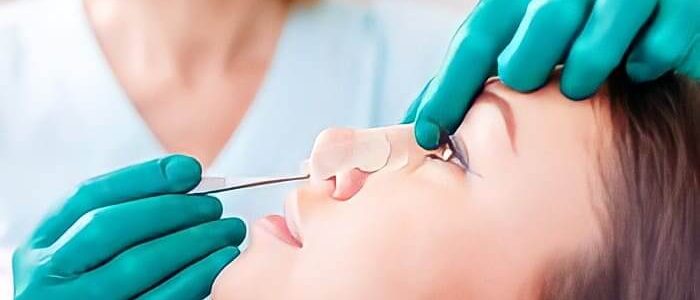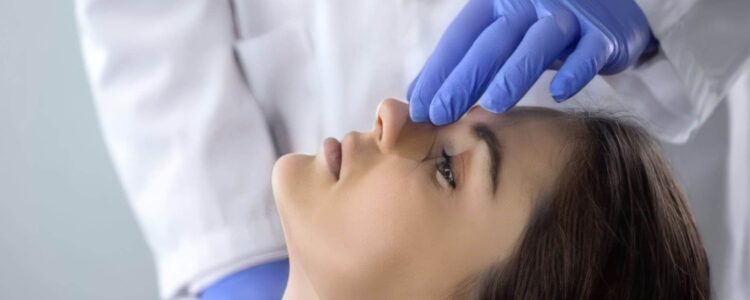Rhinoplasty Surgery
a low-risk surgery.
Before doing Rhinoplasty, the patient must define the change of their nose, and the doctor has to determine the possible changes for the patient. The doctor will start planning for the operation after comparing the structure of the nose, cartilage, face structure, and skin type according to the patient’s desire.

How Should The Nose Be Ideal?
For whom this procedure is suitable
- If you are not satisfied with the appearance or the size of your nose.
- If your nose is too big or too small or doesn’t match your face
- If you have breathing problems.
- If your nose is too big and heavily curved.
- If you have congenital problems or had an accident.
- For a healthier life and better appearance, you should perform Rhinoplasty.

Before the Operation
Medical History: One of the most important things your doctor needs to know is the cause and purpose of the surgery. You should determine the changes you want to make in your nose and the problems you feel uncomfortable with. Another important issue is your medical history, you should inform your doctor about the medicines you are using and whether you are suffering from nasal congestion, and the diseases you have suffered.
Physical Examination: Before the operation, some laboratory tests will be performed by your doctor. Also, after examining the structure of your face from inside and outside, Your doctor will examine your physical characteristics and health generally, and determine if you can have the operation and what changes can be made to your nose.
Pictures: Before and after the surgery, your nose is photographed from different angles. This way you will have the opportunity to compare your appearance before and after the operation.
Oral medicine And Drugs: Two weeks before the operation, avoid taking Aspirin and Ibuprofen medications because it will increase bleeding. You also need to stop smoking cause it delays the healing process and increases the risk of infection.
During The Operation
Opened Rhinoplasty: This process is done by opening a small incision at the bottom of the nose holes and removing the skin. This technique gives the surgeon a wider viewing angle. Also, this technique is used for patients with advanced deformity or prior history of cosmetic nose surgery.
Closed Rhinoplasty: in this method, the cracks are inside the nose holes. Although the viewing angle is limited in this technique, there is no possibility of visible suture scars from the outside. Also, recovery time is relatively shorter.
Nasal Septum Deviation (Septoplasty) Is the area that divides the nasal cavity and consists of bone and cartilage and is called the “nasal barrier”. Deflection of the barrier creates a blockage in the nose, causing difficulties in breathing. The process of correcting the curvature of the barrier is called Septoplasty.
Symptoms of deviation of the barrier: difficult breathing, nasal congestion, sinusitis, nasal bleeding, headache, nasal discharge, and dry mouth. All of these symptoms make life much harder.
This operation is performed under local or general anesthesia. The portion of the obstruction is removed or corrected by cutting one side of the barrier through the nose. There will be no change in the appearance of the nose after surgery. After the diaphragm, nasal plugs are often not used and therefore the recovery period feels comfortable.
After Septoplasty
- Be aware not to bump into anything with your nose and avoid moving it.
- Apply cold compresses on the nose to reduce swelling and pain.
- Be careful not to mute sneeze.
- Avoid heavy sports.
- Do not bathe with too hot water.
- Instead of lying down, keep your head 30 degrees higher than the heart level to reduce swelling.
- Do not use any medicine without consulting your doctor except for the painkiller prescribed by your doctor.
After The Operation of Rhinoplasty
After about 7 days the nasal splint is removed and the stitching is done and the tape is pasted onto the nose. The presence of bruises and swelling around the nose and eyes after the surgery is normal. Although it reaches its maximum level in the first three days, it disappears within two weeks. Cold compresses help reduce swelling and bruising. In order not to decrease the speed of healing after the operation and maintain bleeding and swelling at the minimum you must do the following steps for a couple of weeks:
- Avoid any sports activities.
- As long as you have bandages on your nose, you should shower in the bathtub instead of a normal shower.
- Avoid blowing or wiping your nose.
- To avoid constipation, you should eat fiber-rich foods such as vegetables and fruits (Conspiration may cause shrinkage resulting in pressure on the surgical area).
- Avoid extreme facial expressions such as smiling and laughing.
- Teeth should be gently brushed by restricting the movement of the upper lip.
- You should not wear any clothes that go through the head such as shirts and blouses.
- You should not wear glasses for at least four weeks because they will apply pressure on your nose after surgery.
- You should also use the SPF30 sunscreen when you go out. Excessive exposure to the sun may permanently change your skin color.
- After Rhinoplasty, be sure not to get any nosebleed.
- Avoid sneezing strongly.
- You should avoid smoking and alcohol.
- You will be allowed to leave the hospital after staying under observation for a short time after the operation.
- Your doctor will provide you with a home recovery plan.

